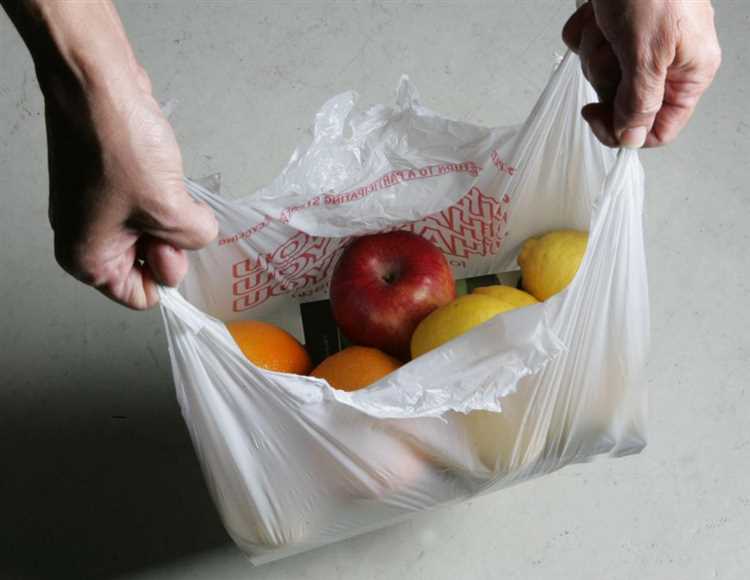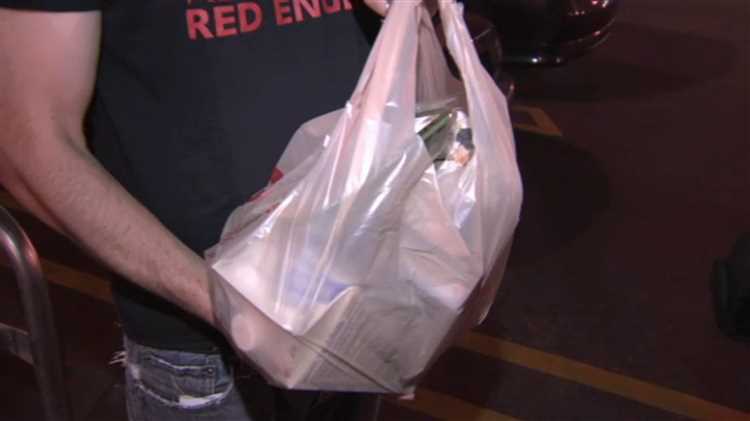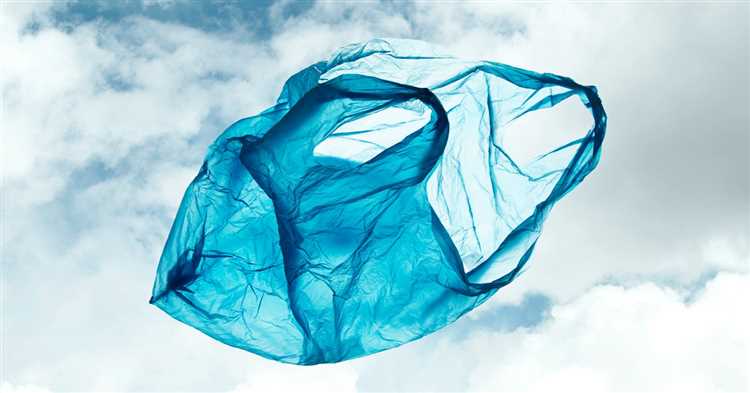
In an effort to reduce plastic waste and promote sustainable practices, California implemented a statewide ban on single-use plastic bags in 2016. As part of this initiative, consumers were required to pay a 10-cent fee for each paper bag or reusable bag they used at the checkout counter. But where does this 10 cents go?
The 10-cent fee is not a profit for the retailers, but rather a way to cover the cost of providing alternative bags to customers. According to California law, retailers must use the proceeds from the bag fee to do one of the following:
- Provide reusable bags to customers for free or at a discounted price.
- Supply educational materials to promote the use of reusable bags.
- Fund programs that support the recycling of single-use bags.
- Contribute to the CalRecycle’s Plastic Pollution Reduction Account.
This means that the 10-cent fee is used to support various efforts aimed at reducing plastic waste and promoting sustainable alternatives. By redistributing the funds in this way, California encourages individuals to bring their own bags or opt for reusable options, ultimately helping to protect the environment and reduce the amount of plastic that ends up in landfills and ecosystems.
So, the next time you pay 10 cents for a bag at the checkout counter in California, remember that your contribution is going towards important initiatives that are making a difference in the fight against plastic pollution.
- Overview of the Bag Fee in California
- Environmental Impact
- Public Perception and Reception
- Environmental Impact of Plastic Bags
- Allocation of Bag Fee Revenue
- Support for Environmental Initiatives
- Effectiveness of Bag Fee in Reducing Plastic Waste
- Future of the Bag Fee
- Q&A:
- What is the purpose of the 10 cent bag fee in California?
- Who is responsible for collecting the 10 cent bag fee?
- Where does the money from the 10 cent bag fee go?
- How much money is generated from the 10 cent bag fee?
- Is the 10 cent bag fee effective in reducing plastic bag usage?
Overview of the Bag Fee in California
In an effort to reduce waste and promote environmental sustainability, California implemented a statewide bag fee in 2014. The bag fee requires customers to pay 10 cents for each carryout bag provided by retailers.
The bag fee applies to all types of retail stores, including grocery stores, convenience stores, and pharmacies. However, there are some exceptions to the fee. Bags used for meat, produce, and bulk foods are exempt from the fee, as well as bags used for prescription medications.
The bag fee is intended to discourage the use of single-use plastic bags and encourage the use of reusable bags. By charging customers for each bag, the hope is that they will be more inclined to bring their own reusable bags when shopping.
The revenue generated from the bag fee is used for a variety of purposes. A portion of the revenue is allocated to cover the costs of implementing and enforcing the bag fee. The rest of the revenue goes towards various environmental and conservation programs.
Environmental Impact
Since the implementation of the bag fee, there has been a significant reduction in the use of single-use plastic bags in California. This has led to a decrease in plastic bag litter and a positive impact on the environment. Additionally, the use of reusable bags has increased, further reducing waste.
Public Perception and Reception

The bag fee in California has been met with mixed reactions from the public. Some people appreciate the environmental benefits and are willing to pay the fee in support of sustainability efforts. Others have criticized the fee as an unnecessary burden or an example of government overreach.
Overall, the bag fee in California serves as a reminder of the importance of reducing waste and making environmentally-conscious choices. It is a small step that can have a significant impact on the health of our planet.
Environmental Impact of Plastic Bags
Plastic bags have a significant negative impact on the environment. Here are some of the key environmental issues associated with plastic bag usage:
- Plastic Pollution: Plastic bags are a major contributor to marine pollution. When disposed of improperly, they can make their way into water bodies and harm marine life. Marine animals often mistake plastic bags for food, which can lead to their injury or death.
- Landfill Waste: Plastic bags are not easily biodegradable and can take hundreds of years to decompose. This means that when plastic bags end up in landfills, they occupy valuable space and contribute to the growing problem of waste accumulation.
- Resource Consumption: The production of plastic bags requires significant amounts of resources, including oil and natural gas. This contributes to the depletion of these finite resources and adds to carbon emissions during the manufacturing process.
- Ecosystem Disruption: Plastic bags can disrupt ecosystems in various ways. For example, they can trap and suffocate animals like birds and turtles, leading to population decline. Additionally, the presence of plastic bags in natural environments can alter nutrient cycles and affect plant growth.
Considering these environmental impacts, it is crucial to reduce the use of plastic bags and opt for more sustainable alternatives. This includes using reusable bags, such as cloth or canvas bags, and supporting policies that promote the reduction of single-use plastic bags.
Allocation of Bag Fee Revenue

In California, the 10 cents per bag fee that customers pay when purchasing bags at retail stores is allocated towards various purposes. The allocation of bag fee revenue is determined by state legislation and aims to address environmental concerns and promote sustainable practices.
A portion of the bag fee revenue goes towards covering the costs of implementing the bag ban, including increasing public education and awareness about the negative impacts of single-use plastic bags. These funds support campaigns that encourage the use of reusable bags and provide information on the proper disposal of plastic bags.
Another portion of the revenue is directed towards assisting low-income communities and small businesses. These funds are used to implement programs that help these communities transition to more sustainable practices, such as providing reusable bags to residents or offering discounts on reusable bags for small businesses.
A significant portion of the bag fee revenue is allocated towards environmental conservation efforts. These funds are used to support initiatives that aim to clean up and protect California’s natural resources, including rivers, lakes, oceans, and wildlife habitats. This includes funding for beach cleanups, restoration projects, and research on the impacts of plastic bags on the environment.
Additionally, a portion of the revenue goes towards administration and enforcement costs related to implementing and maintaining the bag ban. This includes personnel costs, equipment, and resources needed to oversee compliance with the bag fee requirement and enforce any penalties for non-compliance.
Overall, the allocation of bag fee revenue in California reflects the state’s commitment to reducing plastic waste, promoting sustainability, and protecting the environment. By utilizing these funds for education, assistance to low-income communities, environmental conservation, and enforcement, California aims to create lasting change and minimize the negative impacts of single-use plastic bags.
Support for Environmental Initiatives
The 10 cents for bags program in California is just one example of the state’s commitment to supporting environmental initiatives. The revenue generated from the bag fee is used to fund a variety of programs aimed at protecting and sustainably managing California’s natural resources.
The funds collected from the bag fee go towards initiatives such as:
- Coastal conservation and restoration projects
- Recycling and waste reduction programs
- Public education campaigns on environmental issues
- Research and development of sustainable materials
By supporting these initiatives, Californians are investing in the future of their state and the health of the planet. The 10 cents for bags program not only serves as a deterrent to single-use plastic bags but also contributes to a cleaner and greener California.
Furthermore, the program encourages individuals to adopt eco-friendly habits, such as bringing their own reusable bags when shopping. This helps reduce the consumption of plastic and minimizes the negative impact on the environment.
Overall, the 10 cents for bags program reflects California’s dedication to promoting sustainability and raising awareness about the importance of environmental conservation. It is an example of how a small contribution from each individual can make a significant difference in protecting our planet for future generations.
Effectiveness of Bag Fee in Reducing Plastic Waste
The implementation of a bag fee in California has been aimed at reducing the use of single-use plastic bags and the resulting plastic waste. The fee, which is typically 10 cents per bag, is intended to incentivize consumers to bring their own reusable bags when shopping.
The effectiveness of the bag fee in reducing plastic waste has been evident since its introduction. Studies have shown a significant decrease in the consumption of plastic bags and a subsequent decrease in plastic waste in areas where the fee has been implemented. For example, a study conducted in San Francisco found that the bag fee led to a 70% reduction in plastic bag use.
In addition to reducing plastic waste, the bag fee has also had other positive effects on the environment. By encouraging the use of reusable bags, it helps to conserve resources and reduce the demand for new plastic bags. This, in turn, reduces the carbon footprint associated with the production and disposal of plastic bags.
| Benefits of Bag Fee in Reducing Plastic Waste: |
| – Decreased consumption of single-use plastic bags |
| – Reduction in plastic waste |
| – Conservation of resources |
| – Decreased carbon footprint |
Overall, the bag fee in California has proven to be an effective measure in reducing plastic waste. It not only encourages individuals to make more sustainable choices when shopping but also contributes to the preservation of the environment for future generations.
Future of the Bag Fee
The bag fee in California has been successful in reducing the use of single-use plastic bags and promoting the use of reusable bags. As a result, the future of the bag fee looks promising, with more cities and states considering implementing similar programs.
One potential direction for the bag fee is expanding it to include more types of bags. Currently, the fee only applies to certain types of single-use bags, such as those handed out at grocery stores. However, there is growing support for expanding the fee to include bags from other industries, such as clothing stores and restaurants.
Another possible future development is increasing the bag fee. Currently, the fee is set at 10 cents per bag, but there are discussions about raising it to further discourage the use of single-use plastic bags. The additional revenue generated from a higher bag fee could be used to fund environmental initiatives or education programs to promote sustainable lifestyle practices.
Furthermore, there is a movement towards banning single-use plastic bags altogether. Several countries and cities around the world have already implemented such bans, and California could follow suit in the future. Instead of charging a fee for bags, consumers would be encouraged to bring their own reusable bags or purchase reusable bags at the checkout counter.
Overall, the bag fee in California has been successful, and the future of the program looks bright. Whether through expanding the types of bags covered, increasing the fee, or implementing a complete ban, the bag fee is likely to continue playing a role in reducing plastic waste and promoting sustainable living.
Q&A:
What is the purpose of the 10 cent bag fee in California?
The purpose of the 10 cent bag fee in California is to encourage people to bring their own reusable bags and reduce the use of single-use plastic bags, thus reducing plastic waste and environmental impact.
Who is responsible for collecting the 10 cent bag fee?
The responsibility for collecting the 10 cent bag fee falls on the retailers, such as grocery stores and supermarkets. They are required by law to charge customers 10 cents for each paper bag or reusable bag provided.
Where does the money from the 10 cent bag fee go?
The money collected from the 10 cent bag fee goes to several destinations. First, the retailer keeps 5 cents as a handling fee to cover the costs of implementing the bag fee. The remaining 5 cents is used for various purposes, such as providing free reusable bags to low-income customers, supporting recycling and composting programs, and funding educational campaigns on the importance of reducing plastic waste.
How much money is generated from the 10 cent bag fee?
The exact amount of money generated from the 10 cent bag fee in California varies each year. However, it is estimated that millions of dollars are collected annually from the bag fee, which can be used for environmental initiatives and programs aimed at reducing plastic waste.
Is the 10 cent bag fee effective in reducing plastic bag usage?
Yes, studies have shown that the 10 cent bag fee has been effective in reducing the usage of single-use plastic bags in California. Since the implementation of the bag fee, there has been a significant decrease in the consumption of plastic bags, leading to a positive environmental impact by reducing plastic waste.